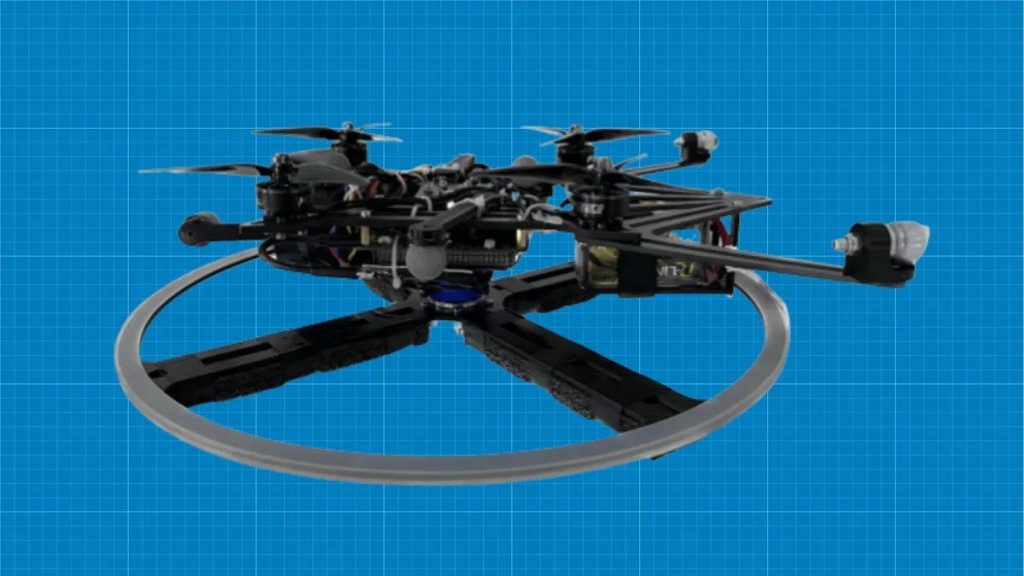A team of researchers at Zhejiang University has developed a unique hybrid vehicle that can fly and move on the ground. The project, named Roller-Quadrotor, is based on a single-wheeled cycle design with a turning mechanism assisted by a rotor. In a paper pre-published on arXiv, Wang, Zheng, and their team present the design of this rotary-wing aircraft, which can hover and fly above the ground while also rolling on various terrains and passing through narrow gaps.
“Roller-Quadrotor is a novel hybrid terrestrial and aerial quadrotor that combines the elevated maneuverability of the quadrotor with the lengthy endurance of the ground vehicle,” Zhi Zheng, Jin Wang and their colleagues wrote in their paper. “Flying is achieved through a quadrotor configuration, and four actuators providing thrust. Rolling is supported by a unicycle-driven and rotor-assisted turning structure. During terrestrial locomotion, the vehicle needs to overcome rolling and turning resistance, thus saving energy compared to flight mode.”
The paper details the vehicle’s design and includes a series of controllers and models that enable it to transition smoothly between flying and rolling modes. The researchers conducted a series of experiments to test the vehicle’s prototype in an environment with motion capture sensors and cameras, and the results are outlined in the paper.
“This work overcomes the challenging problems of general rotorcraft, reduces energy consumption and allows movement through special terrains, such as narrow gaps,” the researchers wrote in their paper. “It also solves the obstacle avoidance challenge faced by terrestrial robots by flying.”
“We design the models and controllers for the vehicle,” Zheng, Wang and their colleagues wrote in their paper. “The experiment results show that it can switch between aerial and terrestrial locomotion, and be able to safely pass through a narrow gap half the size of its diameter. Besides, it is capable of rolling a distance approximately 3.8 times as much as flying or operating about 42.2 times as lengthy as flying.”
The researchers plan to continue enhancing the vehicle’s design by improving the accuracy of their model and introducing a better control algorithm. This would improve the vehicle’s navigation capabilities and make it easier to transition from flying to rolling mode.
“We are also considering structural optimization and weight reduction, to further improve the energy consumption performance,” the researchers concluded in their paper. “Furthermore, we will use planning algorithms to enhance vehicle mobility.”

